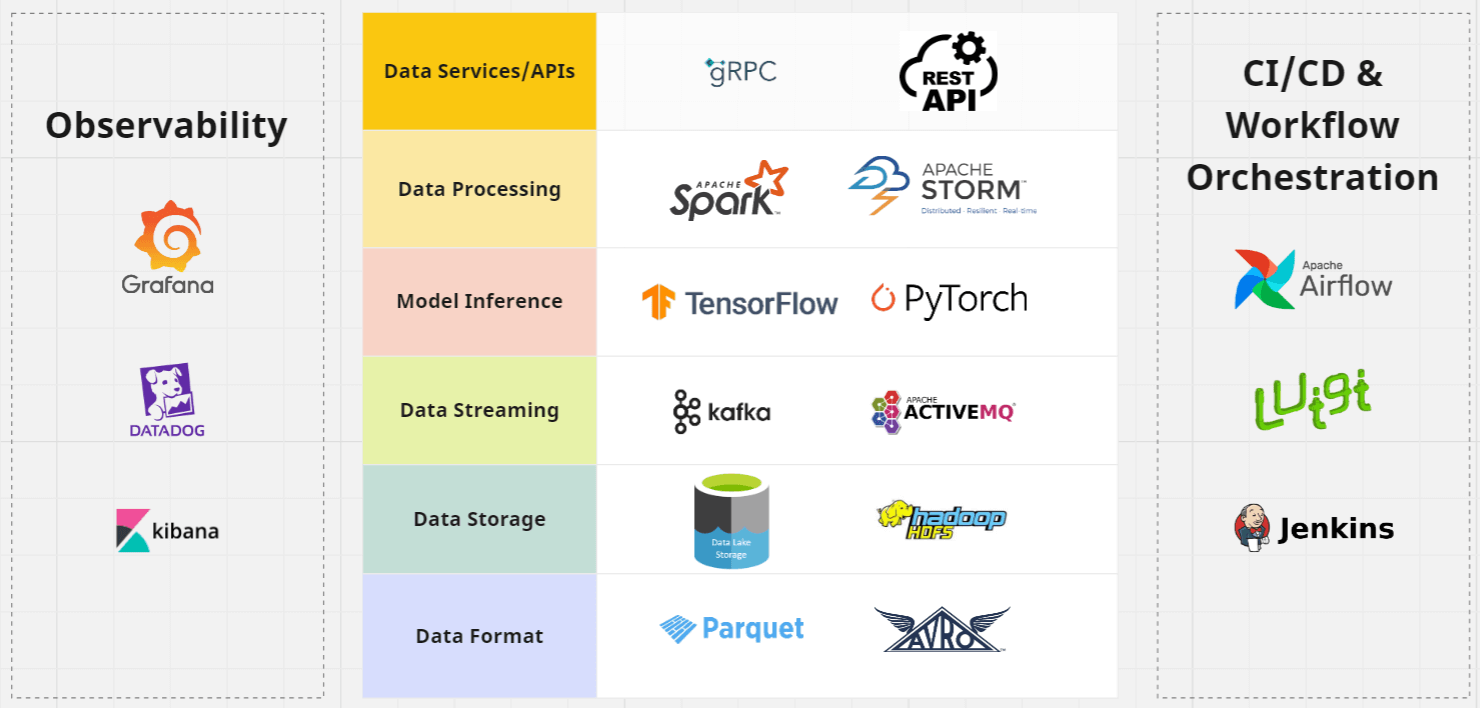A tech stack isn't just a collection of tools and platforms; it's the backbone that powers our initiatives, shapes the experiences of our users, and drives business growth. As a technical product manager (TPM), you may need to present a tech stack for a product at various stages of the product development lifecycle.
Key scenarios in which a technical product manager would likely have to present the tech stack
With leadership
- Product planning and strategy: A technical product manager might need to present the proposed tech stack to stakeholders while planning a product. This is often part of the process of aligning the product’s technical requirements with the overall product strategy.
- Project kickoff and quarterly business reviews (QBRs): When a new project or product development effort begins or during quarterly business reviews with executive leadership, the technical product manager may present the chosen tech stack to the development team to ensure everyone is on the same page and to address any technical questions or concerns. Throughout the development process, there may be regular technical reviews or sprint planning meetings where the technical product manager presents or discusses the tech stack to the development team to ensure that the chosen technologies align with the project’s goals.
With engineers/designers/stakeholders
- Design decisions: When making significant architectural decisions or changes, the technical product manager may need to present the proposed tech stack to the development team, architects, and other relevant stakeholders to gain buy-in and address any concerns.
- Stakeholder updates: Regular updates to stakeholders, including senior management, investors, or external partners, may require presenting the tech stack. This helps stakeholders understand the technical foundation of the product and how it supports the business objectives and its limitations.
- Vendor/partner discussions: If the product involves third-party services, the technical product manager may need to present the tech stack when discussing partnerships or vendor agreements.
- Security reviews: If the product handles sensitive data or has specific compliance requirements, the technical product manager may need to present the tech stack to security and compliance teams to ensure that the chosen technologies meet the necessary standards.
- Scaling and performance tuning: As the product grows, the technical product manager may need to revisit the tech stack to ensure it can scale and perform efficiently. Presenting any changes or upgrades in the tech stack may be necessary.
With engineers/designers/stakeholders/leadership
- Post-launch evaluation or retrospective: After the product is launched, the technical product manager may present the tech stack as part of a post-launch evaluation to assess the performance and scalability of the technologies used and to suggest any optimizations or updates.
In all these situations, the presentation of the tech stack should include details about the programming languages, frameworks, databases, hosting platforms, infrastructure components, and any other technology choices that make up the product’s technical foundation.
Here is a generic template for showcasing your product’s tech stack; modify it accordingly for your product.
Areas to emphasize
While the engineering team would be your best bet to answer any technical questions around the teach stack, it is essential for the technical product manager to communicate the rationale behind these choices, their impact on the product, and their alignment with the overall product and company’s strategy and goals. Some areas to emphasize are:
Business and strategy
- Business impact: The technical product manager may discuss how it aligns with the company’s goals, enhances revenue streams, improves operational efficiency, or facilitates market expansion. It would also be helpful to emphasize the correlation between the technological choices and the bottom-line impact.
- Security and Compliance: Address security measures and compliance standards upheld by the tech stack. Assure the executives that the chosen technologies maintain data integrity, privacy, and meet regulatory requirements, ensuring the company’s reputation and customer trust.
- Roadmap and Innovation: If available, it would be beneficial to outline the tech stack’s roadmap, discuss future integrations, planned updates, or potential innovative features that align with the company’s long-term vision. Highlight how technological choices support continuous improvement and innovation.
- Risks and Mitigation Strategies: Acknowledge potential risks associated with the tech stack and present mitigation strategies. Address concerns regarding dependencies, potential disruptions, or technological obsolescence. Demonstrate proactive measures to mitigate such risks.
Execution
- MVP or proof of concept: If feasible, offer a proof of concept to showcase how the tech stack functions and delivers value. Prototypes can significantly reinforce the presentation.
- Scalability and flexibility: Demonstrate how the tech stack enables scalability and flexibility. Discuss its ability to accommodate growth, adapt to changing market needs, and support future innovations without significant disruptions or high costs.
- Cost efficiency: It is crucial to present a clear cost-benefit analysis and showcase how the chosen tech stack optimizes costs, whether through efficient resource utilization, lower maintenance expenses, or leveraging open-source solutions without compromising quality.
Marketing
- Competitive advantage: Where applicable, describe how the tech stack provides a competitive edge. Explain how it enables superior user experience, or such unique features that differentiate the product from competitors.
Conclusion
While this does not serve as a formula or an exhaustive list of items to focus on, the goal of this article is to provide a template that could be customized. Tailoring the presentation to resonate with the product’s strategic priorities and concerns while providing a clear understanding of the tech stack’s value proposition will greatly enhance its effectiveness.










